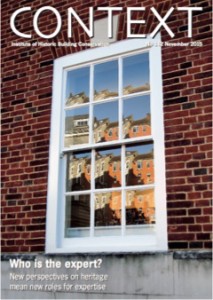It is not every day that a new access bridge is proposed for an iconic scheduled ancient monument on a dramatic coastline – especially when the heritage sector as a whole faces such financial pressures – but English Heritage (EH) has revealed the six shortlisted designs from 137 entries worldwide concerning a new bridge to Tintagel Castle on the north Cornwall coast.
English Heritage writes:
Concept designs from the six teams competing to design a new footbridge at Tintagel Castle were today (Thursday 3 December 2015) unveiled by English Heritage. The designs will go on display in Tintagel village from tomorrow and English Heritage is asking the public for their thoughts on the different approaches.
Tintagel Castle on the north Cornwall coast is one of the most spectacular historic sites in Britain and inextricably linked to the legend of King Arthur. Today the remains of the 13th century settlement can be seen on both the mainland and jagged headland projecting into the sea, but Tintagel’s divided landscapes were once united by a narrow strip of land.
English Heritage plans to build a new footbridge at Tintagel Castle, a bridge that will follow the path of the original crossing between the mainland and headland. The bridge will help visitors to better understand the site’s history and will also improve access to the island, reducing the visitor bottlenecks sometimes experienced during the busiest summer months, and help to protect and conserve the landscape. The final bridge will be rooted in the unique sense of place at Tintagel and sensitively balanced with the landscape and exceptional surroundings.
Earlier this year, English Heritage launched a competition – organised by Malcolm Reading Consultants – to find the best architectural and engineering team to design the new footbridge. In total 137 applications were received from 27 different countries. Six teams were shortlisted and now for the first time, it is possible to get a sense of the different approaches each finalist would take. The designs presented are concept designs by the six finalists – they are not the final designs.
English Heritage wants to get the public’s views and their comments will be fed through to the expert panel of judges who will decide on the winner in the New Year.
Kate Mavor, English Heritage’s Chief Executive, said: ‘We are looking for the most talented team of architects and engineers to design something special for Tintagel Castle. These concept designs help us to visualise each team’s approach and how the bridge would complement Tintagel’s exceptional landscape and rich heritage. We want to keep the public updated at every stage of this very exciting project which is why we’ve organised this display. Seeing the concept designs is a particularly fascinating stage and we’re looking forward to hearing people’s comments.’
Graham Morrison, chair of the jury, said: ‘Here are six very different and clear ideas, all beautifully presented; we are delighted with the response to the brief. Any of these teams is capable of making a worthy addition to the setting. The jury is very much looking forward to the detailed assessment process and, ultimately, selecting a winner.’
Malcolm Reading, architect and competition organiser, said: ‘Designing a bridge for such a challenging environment is a daunting test but these proposals haven’t compromised – they show a love of materials and engineering panache. The structure needs to say it all in a glance but it must also prove satisfying to use, economically-sound, practical to build, and have a healthy life-span.’
The final bridge will be subject to a number of consents and regulatory approvals, including planning permission and Scheduled Ancient Monument Consent. It is planned for completion in 2019.
The concept designs by the six competition finalists will be on display in the Tourist Information Centre in Tintagel village from 4 December until 11 December, 11am to 6pm. The public are invited to comment either at the exhibition or by email to tintagel.bridge@english-heritage.org.uk
The following six architectural and engineering teams are shortlisted for the competition:
- Dietmar Feichtinger Architectes with Terrell (France)
- Marks Barfield Architects with Flint and Neill (UK)
- Ney & Partners with William Matthews Associates (Belgium)
- Niall McLaughlin Architects with Price and Myers (UK)
- RFR and Jean-François Blassel Architecte, with Engineers HRW, and WSP (France)
- WilkinsonEyre with Atelier One (UK)
The competition jury includes: Graham Morrison (chair), founding Partner, Allies and Morrison; the Reverend Peter Beacham OBE, former English Heritage Protection Director and author; Ben Bolgar, Senior Design Director, The Prince’s Foundation; Sir Barrington Cunliffe CBE, Emeritus Professor of European Archaeology, University of Oxford; Anna Eavis, Curatorial Director, English Heritage; Philip Marsden, award-winning author of Rising Ground (2014) and The Levelling Sea (2011); Roger Ridsdill Smith, Senior Partner and Structural Engineer, Foster+Partners; Tracey Wahdan, Historic Properties Director, English Heritage and Kim Wilkie, Landscape Architect. Malcolm Reading will advise the jury.
For more information and to view the concept designs, visit the competition website
View the press release

 The latest issue of the IHBC’s celebrated journal Context has been circulated to members, and asks the question ‘who is the expert’ when it comes to historic buildings.
The latest issue of the IHBC’s celebrated journal Context has been circulated to members, and asks the question ‘who is the expert’ when it comes to historic buildings.